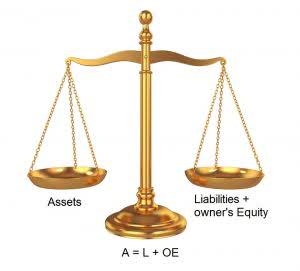
So whether you need to monitor the depreciation of machinery, vehicles, tech, or all of the above, Netgain will help you take control of your asset management. If an asset’s book value falls below its salvage value during the depreciation process, adjust the depreciation expense in that year to ensure it doesn’t go below the salvage value. This adjustment ensures that the asset’s book value never falls below its expected salvage value. For the first period, the book value equals cost and for subsequent periods, it equals the difference between cost and accumulated depreciation. By accelerating the depreciation and incurring a larger expense in earlier years and Bookkeeping for Painters a smaller expense in later years, net income is deferred to later years, and taxes are pushed out.

What the double declining balance method is and how to calculate it.

When accountants use double declining appreciation, they track the accumulated depreciation—the total amount they’ve already appreciated—in their books, right beneath where the value of the asset is listed. If you’re calculating your own depreciation, you may want to do something similar, and include it double declining balance method as a note on your balance sheet. Under the generally accepted accounting principles (GAAP) for public companies, expenses are recorded in the same period as the revenue that is earned as a result of those expenses.
Boosting Customer Lifetime Value for E-commerce Success
The depreciation rate is calculated by doubling the straight-line depreciation rate. For example, if an asset has a useful life of five years, the straight-line rate would be 20%, making the double declining rate 40%. Depreciation is a concept in accounting that influences financial statements and tax calculations. The double declining balance (DDB) method is notable for its accelerated approach to asset depreciation, impacting a company’s reported earnings and tax liabilities by front-loading depreciation expenses.
Calculator Instructions
- If an asset’s book value falls below its salvage value during the depreciation process, adjust the depreciation expense in that year to ensure it doesn’t go below the salvage value.
- Your basic depreciation rate is the rate at which an asset depreciates using the straight line method.
- The following section explains the step-by-step process for calculating the depreciation expense in the first year, mid-years, and the asset’s final year.
- Note that my expertise is in creating online calculators, not necessarily in all of the subject areas they cover.
- For comparison’s sake, this is what XYZ Company would book for depreciation expense every year under the straight line depreciation method versus double declining balance depreciation method.
- This accounting tutorial teaches the accelerated method of depreciation called Double-declining method and provides examples illustrating the accounts involved, how depreciation affects financial reports, and more.
This method is simpler and more conservative in its approach, as it does not account for the front-loaded wear and tear that some assets may experience. While it may not reflect an asset’s actual condition as precisely, it is widely used for its simplicity and consistency. Accelerated depreciation techniques charge a higher amount of depreciation in the earlier years of an asset’s life.
Why would a company use double-declining depreciation on its financial statements?

On top of that, it is worth it for small business owners, larger businesses and anyone owning a rental, to familiarize themselves with Section 179 depreciation and bonus depreciation. As a prolific writer, she leverages her expertise in leadership and innovation to empower young professionals. With a proven track record of successful ventures under her belt, Erica’s insights provide invaluable guidance to aspiring business leaders seeking to make their mark in today’s competitive landscape. Yes, businesses can switch methods if they find another one suits their needs better.
- Depreciation is the process of allocating the cost of a tangible asset over its useful life.
- If you compare double declining balance to straight-line depreciation, the double-declining balance method allows you a larger depreciation expense in the earlier years.
- That is less than the $5,000 salvage value determined at the beginning of the asset’s useful life.
- This formula accelerates depreciation by applying a higher expense in the earlier years of the asset’s useful life.
- Using the DDB method allows the company to write off a larger portion of the car’s cost in the first few years.
- The double declining balance (DDB) method is a depreciation technique designed to account for the rapid loss of value in certain assets.
- Because the book value decreases each period, the depreciation expense decreases as well.
- In that case, we will charge depreciation only for the time the asset was still in use (partial year).
- Our AI-powered Anomaly Management Software helps accounting professionals identify and rectify potential ‘Errors and Omissions’ on a daily basis so that precious resources are not wasted during month close.
- Because of this, it more accurately reflects the true value of an asset that loses value quickly.
- This method falls under the category of accelerated depreciation methods, which means that it front-loads the depreciation expenses, allowing for a larger deduction in the earlier years of an asset’s life.
Under the double declining balance method the 10% straight line rate is doubled to 20%. However, the 20% is multiplied times the fixture’s book value at the beginning of the year instead of the fixture’s original cost. The double declining balance method significantly influences how depreciation is recorded for financial reporting. Depreciation expenses are documented in the income statement, reducing net income, while accumulated depreciation appears on the balance sheet as a contra-asset account. This method falls under the category of accelerated depreciation methods, which means that it What is bookkeeping front-loads the depreciation expenses, allowing for a larger deduction in the earlier years of an asset’s life. Double-declining balance depreciation applies a fixed rate to an asset’s decreasing book value each year.


